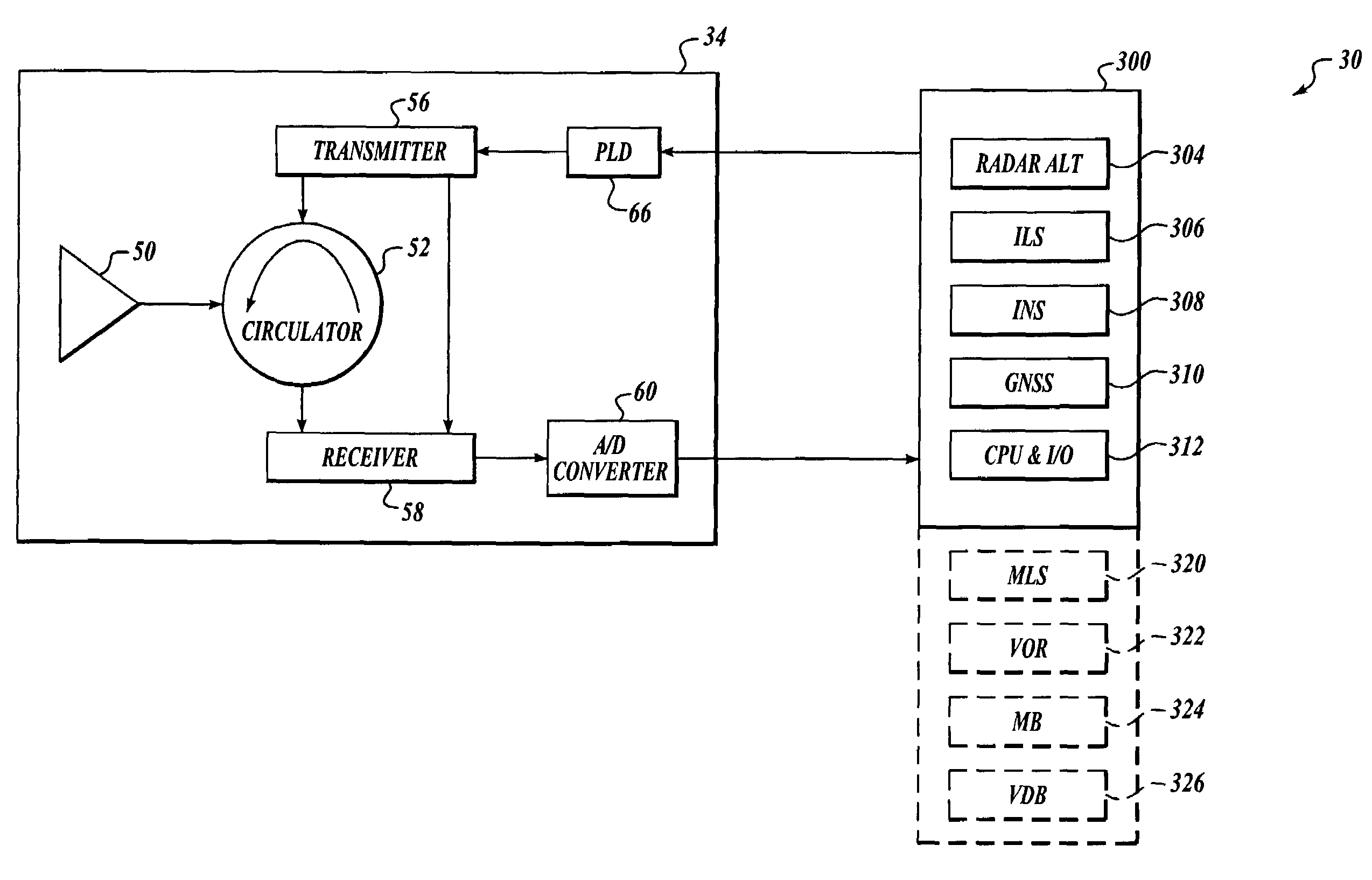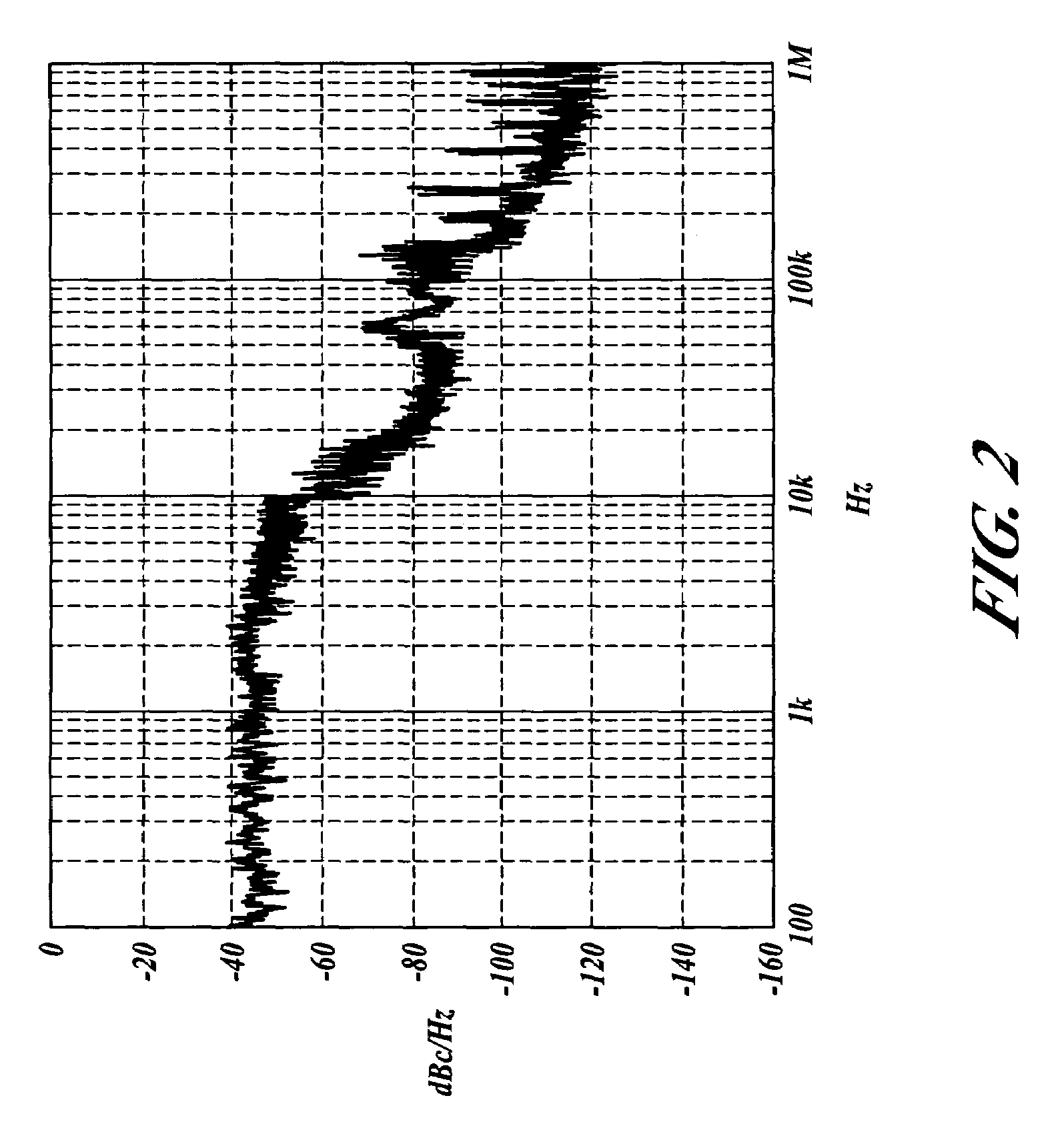Navigation system
a technology of navigation system and receiver, which is applied in the field of navigation system, can solve the problems of reducing altitude accuracy, compromising signal-to-noise ratio, and reducing the received signal strength, so as to reduce weight and installation costs
- Summary
- Abstract
- Description
- Claims
- Application Information
AI Technical Summary
Benefits of technology
Problems solved by technology
Method used
Image
Examples
Embodiment Construction
[0028]FIG. 3 illustrates an example system 30 that includes a radar altimeter 34 and a navigation radio unit 32. The navigation radio unit 32 will be described in more detail below. The radar altimeter 34 produces a digital signal composed of frequencies that correspond to radar reflections at various altitudes. The produced digital signal is transmitted using an error detection / correction scheme to the navigation radio unit 32 over an Ethernet link, fiber optic cables, or another link that provides comparable high digital data bandwidth capabilities.
[0029]The radar altimeter 34 includes a single antenna 50 coupled to a circulator 52. The circulator 52 is a conventional circulator commercially available to provide coupling of a transmitter 56 and a receiver 58 to the antenna 50, while providing isolation between the transmitter 56 and the receiver 58. The transmitter 56 is in signal communication with a Programmable Logic Device 66. The receiver 58 is in communication with the A / D C...
PUM
 Login to View More
Login to View More Abstract
Description
Claims
Application Information
 Login to View More
Login to View More - R&D
- Intellectual Property
- Life Sciences
- Materials
- Tech Scout
- Unparalleled Data Quality
- Higher Quality Content
- 60% Fewer Hallucinations
Browse by: Latest US Patents, China's latest patents, Technical Efficacy Thesaurus, Application Domain, Technology Topic, Popular Technical Reports.
© 2025 PatSnap. All rights reserved.Legal|Privacy policy|Modern Slavery Act Transparency Statement|Sitemap|About US| Contact US: help@patsnap.com



